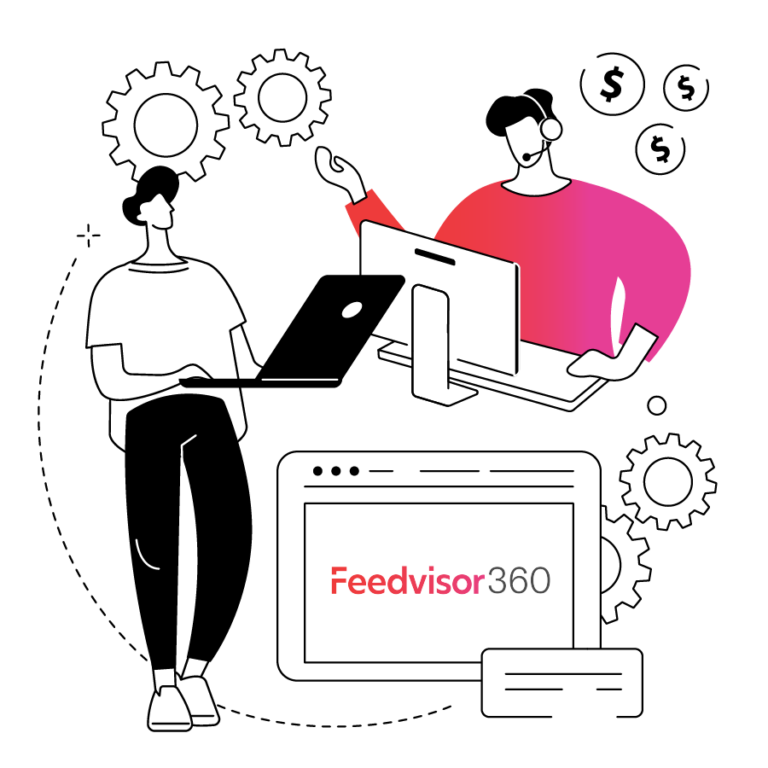Resources - Blog
Amazon Advertising: A Recap of Key Developments in H1

Amazon has emerged as an advertising powerhouse, projected to capture nearly 75% of US retail media ad spending in 2024. A look back at the first half of 2024 is telling — Amazon’s advertising unit grew 24% in Q1, maintaining a substantial lead over competitors in the retail media landscape.
From new ad-supported streaming models to premium inventory and beyond, it’s clear Amazon has set its sights on beating out the competition. Take Disney+’s new campaign manager, Walmart’s latest offsite media offerings, and Home Depot’s rebranding of its retail media network: Orange Apron Media.
As the battle for customer attention grows, so too must Amazon’s advertising arsenal. Throughout the initial half of 2024, the e-commerce giant has enhanced its advertising suite with a slew of updates, ensuring it stays at the forefront of the competition. To capitalize on the wealth of Amazon’s latest advertising capabilities, we’ll recap Amazon Advertising’s key developments for H1 — and what it means for your advertising strategy.
Today's top brands plan to allocate 39% of their monthly advertising budgets to Amazon.
Streaming: The New Goldmine
Q1 saw Amazon’s streaming video strategy sharpen with the addition of ads to Prime Video, showing promising results, including:
- More than 200 million monthly viewers
- A forecasted $3.3 billion in revenue in 2024 worldwide
- An incremental forecasted $500 million per year in ‘24 and ‘25 from those who opt for the ad-free Prime streaming tier
Amazon’s Prime Video stole the spotlight at the e-commerce giant’s Upfronts debut, showcasing its creative prowess with a diverse range of new streaming content. Among these offerings were popular shows like “Fallout” and a lineup of exciting live sports events, from the NFL Wild Card playoff game to the premiere of NASCAR’s 2025 in-season tournament. Including live sports highlights Prime Video’s strategic move to claim live sports advertising — an increasingly valuable territory in the streaming landscape.
For advertisers, this maneuver presents an opportunity for extensive reach, considering Prime Video’s status as one of the largest streaming services after Netflix and YouTube, along with valuable insights into the Prime Video audience. To attract brands, Amazon is enticing them with minimal investment requirements, competitive CPMs (cost per thousand impressions), and additional bonus media incentives.
Our latest e-marketplace report reveals that Amazon’s efforts are paying off. Brands recognize the value of Amazon’s retail media network, fueled by extensive first-party data, and plan to allocate 39% of their monthly advertising budgets to Amazon.
New Technological Innovations
Amazon has released three innovative ad video formats: shoppable, pause, and trivia. In contrast to other streaming platforms that utilize QR codes or shoppable ad experiences directing viewers to their mobile devices, Prime Video will allow viewers to purchase directly using their TV remote.
- Shoppable carousel ads: Shoppable carousel ads enable a seamless experience where customers can explore a sliding lineup of products, add items to their cart, and return to watching using their TV remotes.
- Interactive pause ads: Prime Video’s pause ads add interactivity: pausing a show triggers an ad, but Amazon’s twist includes a button to add the promoted product to the viewer’s cart or email the details.
- Interactive brand trivia ads: Interactive brand trivia ads combine entertainment and shopping, engaging viewers with brand facts and enabling actions like adding items to the cart or earning rewards via the remote. Sponsored trivia questions during ad breaks also offer opportunities for interaction, including adding to cart or earning rewards.
As retail media networks expand, Amazon has emerged as a dominant force, continually innovating to enhance its offerings amidst concerns over the decline of third-party cookies. A significant driver of Amazon’s success in the advertising realm has been its capacity to provide advertisers with comprehensive insights into e-commerce behaviors on a large scale. For instance, Amazon recently showcased the extent of its ambitions by partnering with NCS Solutions to provide CPG brands with enhanced tools for evaluating the impact of their online ad investments on offline sales.
Moreover, Amazon has been refining its DSP (Demand-Side Platform) in recent months by strengthening its connections with supply-side platforms. Sources from Digiday indicate that this involves negotiating agreements with ad tech vendors to secure discounted rates in return for prioritized access.
This is just the tip of the iceberg — other new features added to Amazon’s DSP in recent months include:
- Persona Builder: A new tool enabling advertisers to use Amazon’s insights to understand their audiences better. It combines audience segments into personas, seamlessly activating them through Amazon Ads campaigns and the Amazon DSP.
- Content Controls for Twitch Display Inventory: Amazon DSP now offers Twitch Content Controls tiers for ad placements, enabling advertisers to exclude inappropriate content across both gaming and non-gaming channels on Twitch. Advertisers can select from three tiers—expanded, moderate (default), or restrictive—to customize the level of content filtering for their ads.
- Performance+: A feature within the Amazon DSP designed to achieve specific ad campaign objectives like awareness or conversions by utilizing a blend of first-party data signals and machine learning.
These updates to Amazon’s attribution and targeting have changed how brands spend their ad dollars. Last year, 61% of brands focused on brand awareness as their primary goal. In 2024, 62% of brands now prioritize driving sales, showcasing a strategic shift to leverage Amazon’s unparalleled conversion potential and maximize revenue.
However, new technological updates could be a double-edged sword. These new updates will need to be seamless, with 43% of brands reporting constant platform updates as a challenge associated with advertising on Amazon.
Amazon Recognizes the Importance of Social Commerce
With social media reported to be the top brand opportunity this year, it’s clear that social commerce is no longer disregarded — and Amazon has taken notice.
On the consumer’s side, Meta has partnered with Amazon to introduce in-app purchases. This integration enables users to seamlessly link their Facebook and Instagram accounts to their Amazon profiles for direct in-app purchases through Meta’s social platforms, streamlining the path to purchase and enhancing convenience for customers.
Amazon has also made updates for its advertisers. For instance, brands can now use vertical video ads in Sponsored Brands Video campaigns, offering a chance to engage more effectively with mobile-first shoppers who favor social commerce platforms like TikTok and Instagram.
Amazon’s move to include this new ad format reflects how consumers are increasingly engaging with content on mobile devices. By adopting this format, Amazon ensures Sponsored Brand Video ads are visually appealing and optimized for smartphones and tablets, addressing the rise in mobile shopping and the need for advertisers to adapt to evolving consumer behavior.
In a similar move, consumers can now link their Amazon accounts with Instagram and Facebook, enabling direct checkout on social media. Previously, attributing traffic from social media to Amazon was nearly impossible, making it difficult to scale ad spend effectively. This new integration simplifies attribution, allowing for more efficient ad spend management.
For brands on Amazon, accurate sales attribution to social media efforts and retargeting shoppers across Amazon’s extensive ad network is a game-changer. If you’re not already using social ads that direct to Amazon, now is the time to start — brands have already begun to strategically leverage social media to drive Amazon sales. Our data shows social media marketing is now the top strategy for reaching new customers on Amazon — above video ads and Sponsored Brands.
Final Thoughts
As the competition for dominance in retail media intensifies, major retailers are stepping up their advertising efforts, transforming retail media into a prime opportunity for brands.
From new technological advancements to innovative video formats and more, retail media is driving brands and their interactions with prospective customers to new heights. Capitalizing on retail advertising is now vital to brands’ advertising strategies — a critical piece for maintaining relevance, visibility, and competitiveness.
With retail media advertising, including Amazon’s own advertising suite, continually unlocking new opportunities for businesses, adapting your strategies to the latest offerings is essential. Ready to get started? Elevate your e-marketplace advertising presence with Feedvisor’s AI-driven advertising platform — experience the difference with a free, 14-day trial.

